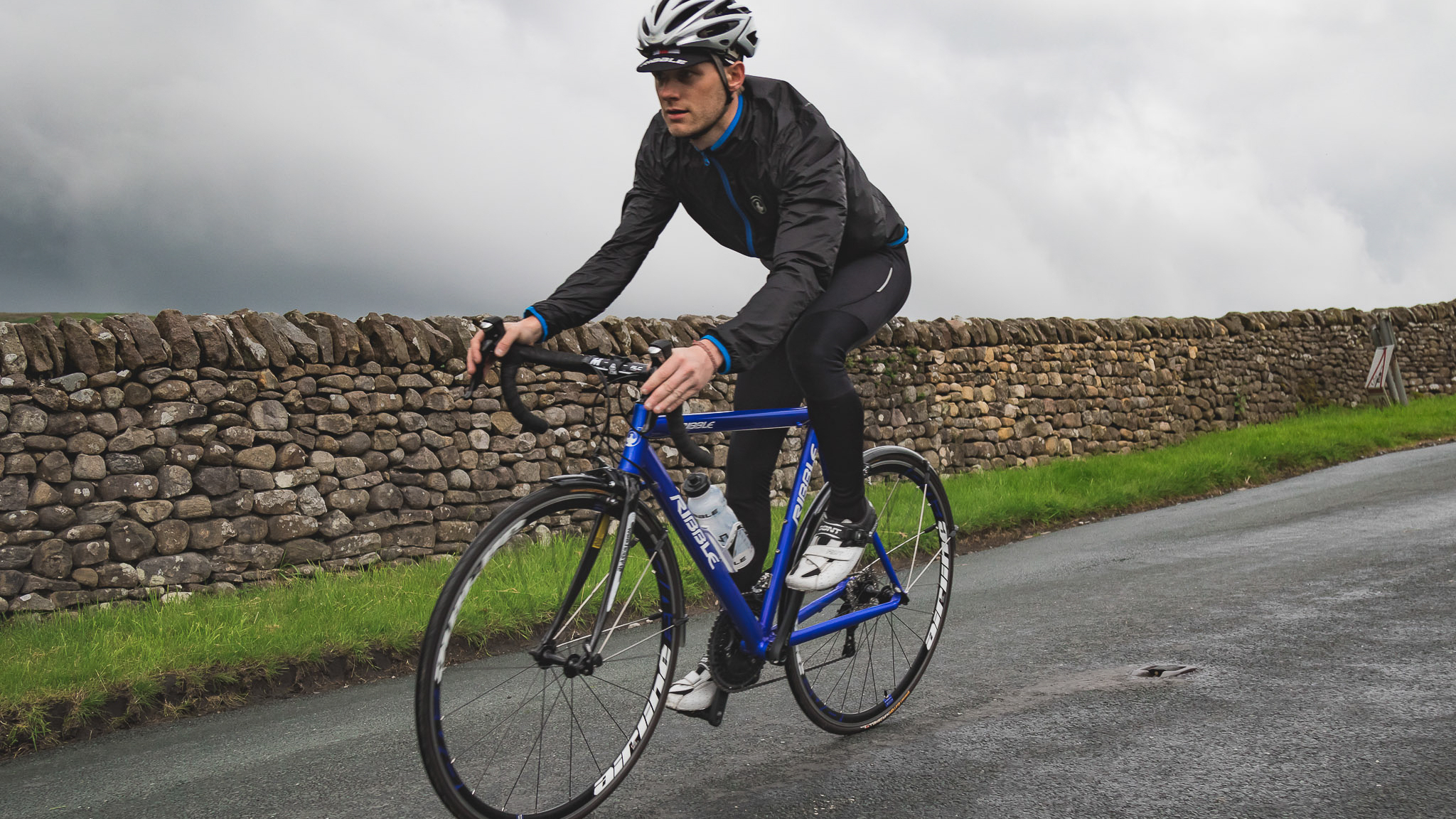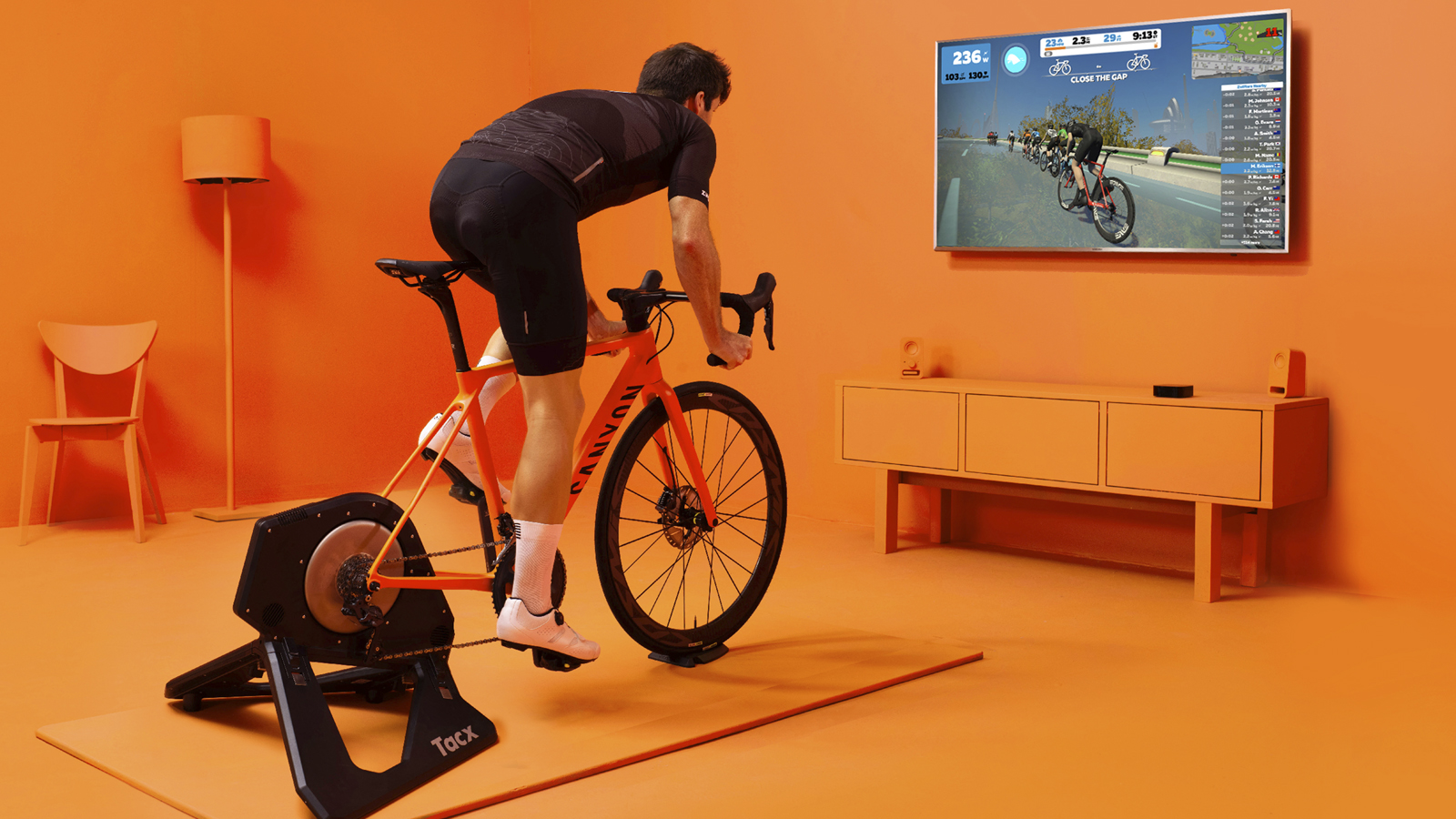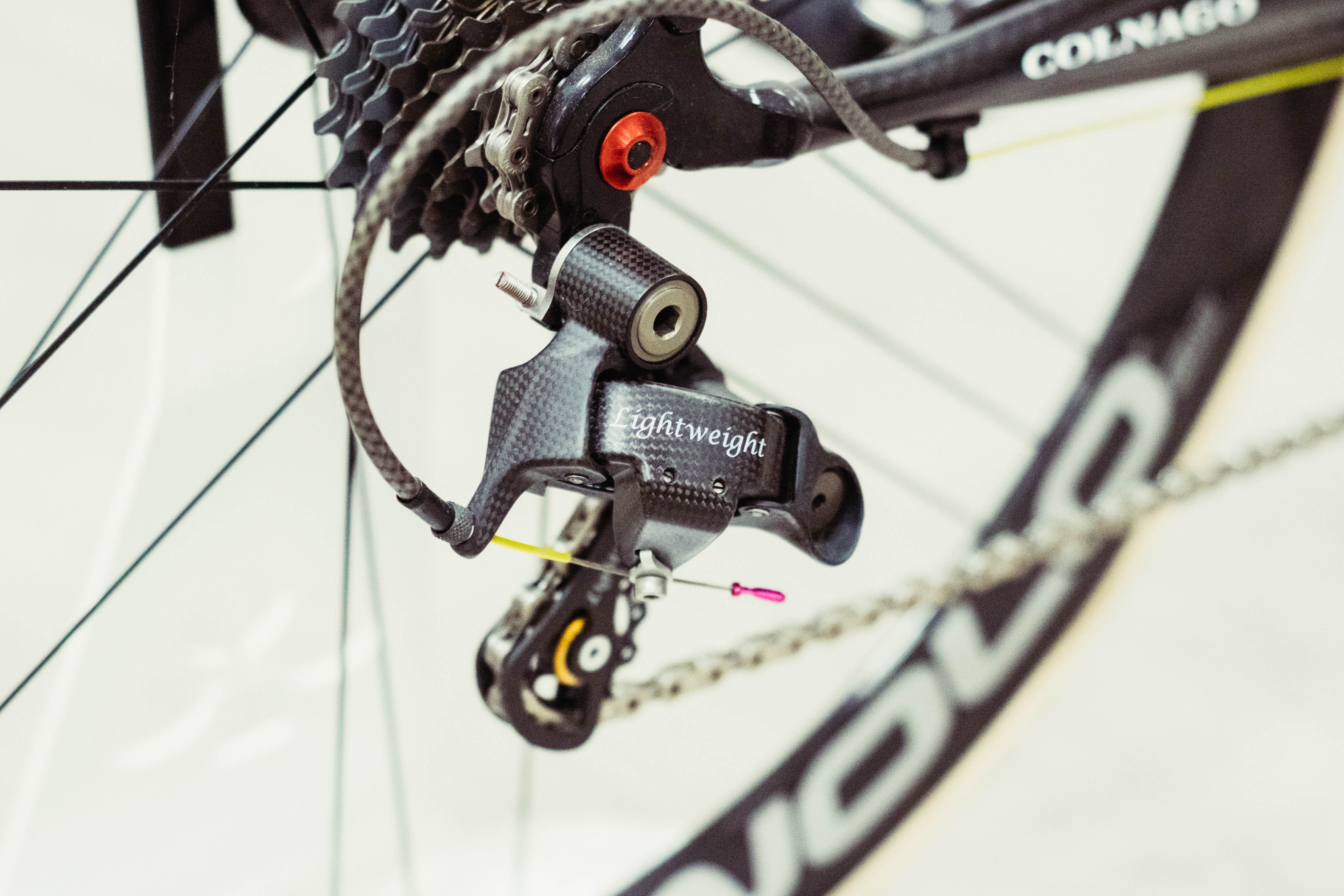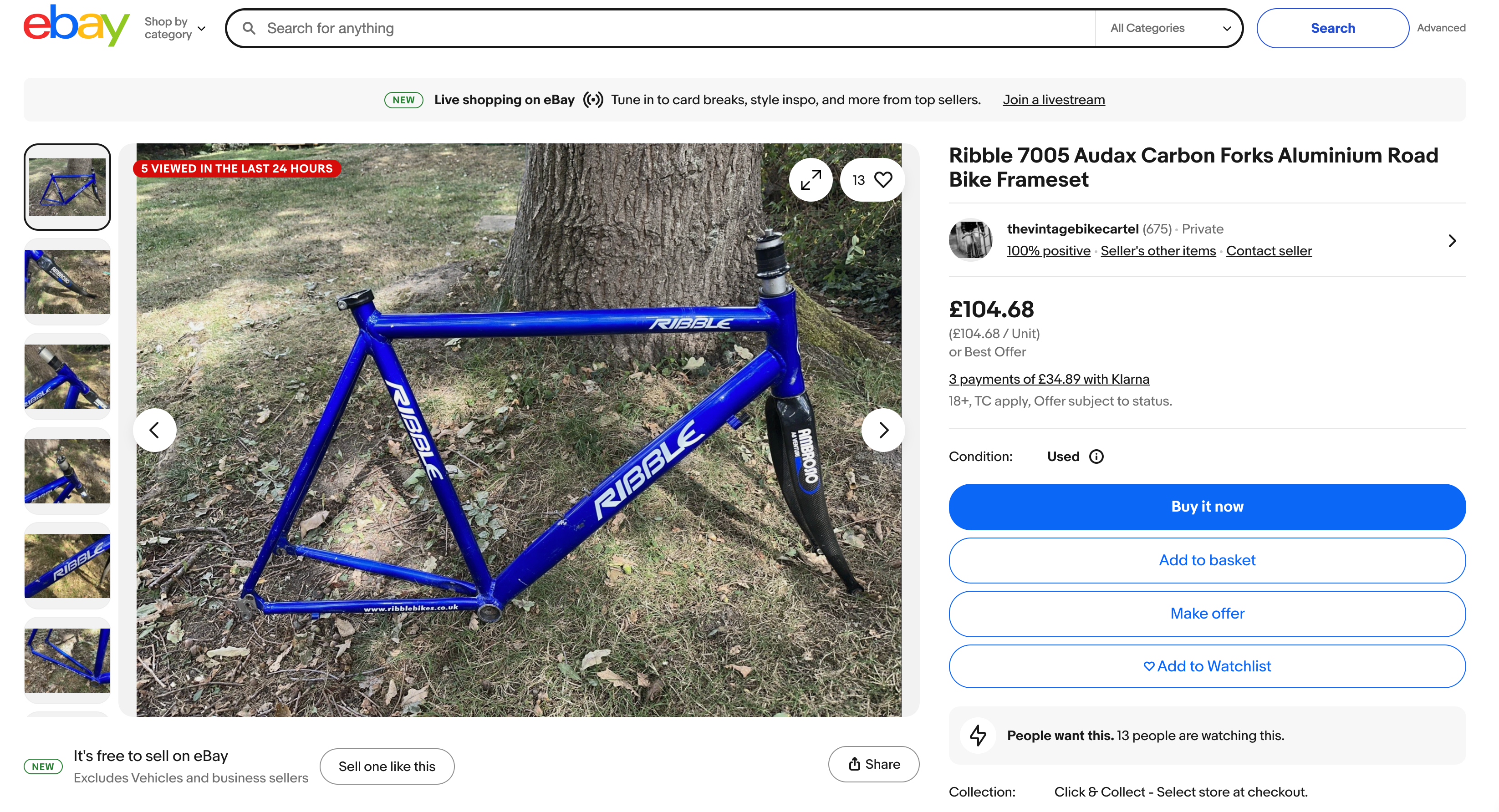The winter bike is dead, and Zwift and disc brakes dug its grave
Farewell to the dying breed of cool, utilitarian functionality

As I write, I am on the way to Italy to be shown some new and exciting gravel bikes, or at least I hope they are both new and exciting. I'll take new though, given my transit to and from Tuscany involves eight trains and a brace of flights.
Happily, on arrival at the second station on my journey, the magnificent Bristol Temple Meads, I spied locked up in the bike racks a fine example of not only the coolest bike genre there is - the dedicated winter bike - but perhaps the archetype of the breed, the magnificent (and discontinued) Ribble 7005.
This, combined with a lovely black americano and a furiously flaky pain au raisin (not ideal for me or the passengers within the buttery blast radius), has both buoyed and saddened me in equal measure. I am glad examples are still out there, but I am dejected that modern cycling is slowly eschewing this gateway drug into true self-sufficiency, and I lay the blame squarely at the feet of disc brakes and Zwift.

What’s so cool about winter bikes?
If I have to pen a list of the coolest bikes of all time, then the Ribble 7005 will be near the top. As I got into cycling, I was living in Leeds, disc brakes were a strange thing that the MTB crowd used, and Zwift was a spelling mistake.
Around this time of year, everyone in my club lucky enough to have a pair of bikes would hang up the summer machine for the year, relegating it to the garage or a hateful, wheel-on turbo trainer, or maybe a set of rollers if they were absolutely brimming with souplesse.
In their place, a fleet of alloy-framed bikes would rumble out into the Yorkshire Dales, fitted with old groupsets, box-section alloy wheels, mudguards, and usually a set of 23c Continental Gator Hardshell tyres pumped up to half a million PSI.
The example below from Sam Marshall is a prime modern example. Alloy frame, plastic mudguards, sensible lighting, and good old reliable 11sp cable Shimano 105.
The latest race content, interviews, features, reviews and expert buying guides, direct to your inbox!
A post shared by Sam Marshall (@sam_marshmellow)
A photo posted by on
Many of them were the owner’s old road bike, slowly crumbling away, but the really cool ones were bought specifically with the intention of riding through the winter. They were never pretentious, there was rarely any real concession to performance, they were easy to maintain, and the focus was on reliability rather than speed. They were a statement of intent, rather than a begrudging resignation to the inevitable. As my best friend told me as I was staring down the barrel of my first winter of riding: “Nobody cares how fast or far you go when it’s raining sideways.”
They are cool precisely because they aren’t flash, and they were almost exclusively owned by The Hardest Rider You Know, which only adds to the mystique. You know the type; unassuming kit, unassuming bike, not on Instagram, uses phrases like ‘I’m not made of sugar’, drops everyone in all weathers in the saddle, refuels with a whole pot of strong tea. The polar opposite of the espresso drinking, Pas Normal Instagram rider.
This focus the winter bikes had on reliability even spawned their own events; the Reliability Ride. An early-season test of rider and machine to see whose bikes managed to make it through months of salt and water intact, and whose legs were reaping the rewards of endless filthy weekends in the saddle.
Why has the winter bike disappeared?

The grave of the winter bike was principally dug by the twin shovels of disc brakes and the advent of the smart trainer. With braking no longer an activity that slowly destroys your rims, there isn’t really a need to have a bike you’re happy to destroy anymore with grit and grime. Yes, the bearings still take a pounding, and there’s a high likelihood that you’re not servicing your freehub nearly enough, but at least now the physical integrity of your wheels is no longer a toll you need to pay each season.
You might think that the far superior braking on offer from discs would have actually increased the number of winter bikes out there, but the problem is that a half-decent bike is now so much more expensive than it used to be, and so even if it’s one’s old bike, the impetus to offer it up to the winter gods is greatly reduced.
This is further compounded by the boom in the ownership of gravel bikes, which themselves do make great winter machines with their bigger tyres, and the fact that mentally it’s easier to imagine them getting mucky. While they are no doubt very capable of putting in the hard yards over winter, they aren’t quite the same on the cool scale as the ol’ blue Ribble and its ilk, however.
Perhaps the main reason people no longer own winter bikes is simply that they don’t need them anymore. The popularity of Zwift and other indoor training platforms, combined with the reducing price of smart trainers, means that more and more people simply ride in their homes, in a virtual world instead, and in all likelihood get fitter and run a lower risk of crashing and general misery as a result.
Self reliance isn’t just about fixing bikes

Part of why I love winter bikes is that they are, in the grand scheme of things, beautifully simple machines to maintain. Rim brakes are comparatively terrible at stopping in the wet, but if you stare at one long enough, you can work out how they work and how to maintain them without needing to resort to a YouTube tutorial. The same goes for gears; while 12sp systems are quite fiddly to index, the margin for error on a 10sp system is huge, and once you’ve worked out what a barrel adjuster does you’re golden. No app to download, no firmware to update, just a bit of metal tugging on a parallelogram.
Building, or even just maintaining a winter bike can teach you a huge amount about basic bike mechanics, and give you a foundation to build on for tackling more complex jobs involving internal cable routing, hydraulic hoses, and bearings. I suspect the slow demise of the winter bike, combined with the growing complexity of bikes generally, is to blame for the ‘just take it to the bike shop’ attitude that prevails nowadays. This is great as it gives beleaguered bike shops more business, but it creates a population of cyclists unable to get themselves out of a roadside pickle, which afflicts us all from time to time.
Self-reliance isn’t just about knowing how to adjust a limit screw on a derailleur or toe-in a set of brake pads. Owning a winter bike gets you out riding in worse weather, and while you really needn’t ride in truly bleak conditions, knowing you can if the conditions change for the worse is a wonderful thing to have in your arsenal, even if you never actually relish pulling on a waterproof cycling jacket or getting the winter cycling gloves out of the box under the stairs.
There’s never been a better time to build your own winter bike

If I have left you inspired to own a winter bike, then I have great news. It's well documented that the cycling industry is struggling, and that is not a good thing, but the silver lining is that the knock-on effect of post-Covid overstocking and a drop in demand has made the bottom fall out of the second hand market. With new bikes so heavily discounted in recent years, you can pick up an absolute bargain on eBay or Facebook Marketplace.
Buy a bike, or even just a frame in your size and fix it up or build it up with cheap, reliable parts, and you'll not only have an incredibly cool machine that will at least be the envy of me, but you'll teach yourself valuable skills that will be an asset to you for a lifetime.
Just stick to these rules: Get a BSA bottom bracket, externally routed cables, fender mounts, a separate bar and stem, and a round seatpost. With those stipulations, you can't go too far wrong.

Will joined the Cyclingnews team as a reviews writer in 2022, having previously written for Cyclist, BikeRadar and Advntr. He’s tried his hand at most cycling disciplines, from the standard mix of road, gravel, and mountain bike, to the more unusual like bike polo and tracklocross. He’s made his own bike frames, covered tech news from the biggest races on the planet, and published countless premium galleries thanks to his excellent photographic eye. Also, given he doesn’t ever ride indoors he’s become a real expert on foul-weather riding gear. His collection of bikes is a real smorgasbord, with everything from vintage-style steel tourers through to superlight flat bar hill climb machines.
You must confirm your public display name before commenting
Please logout and then login again, you will then be prompted to enter your display name.
